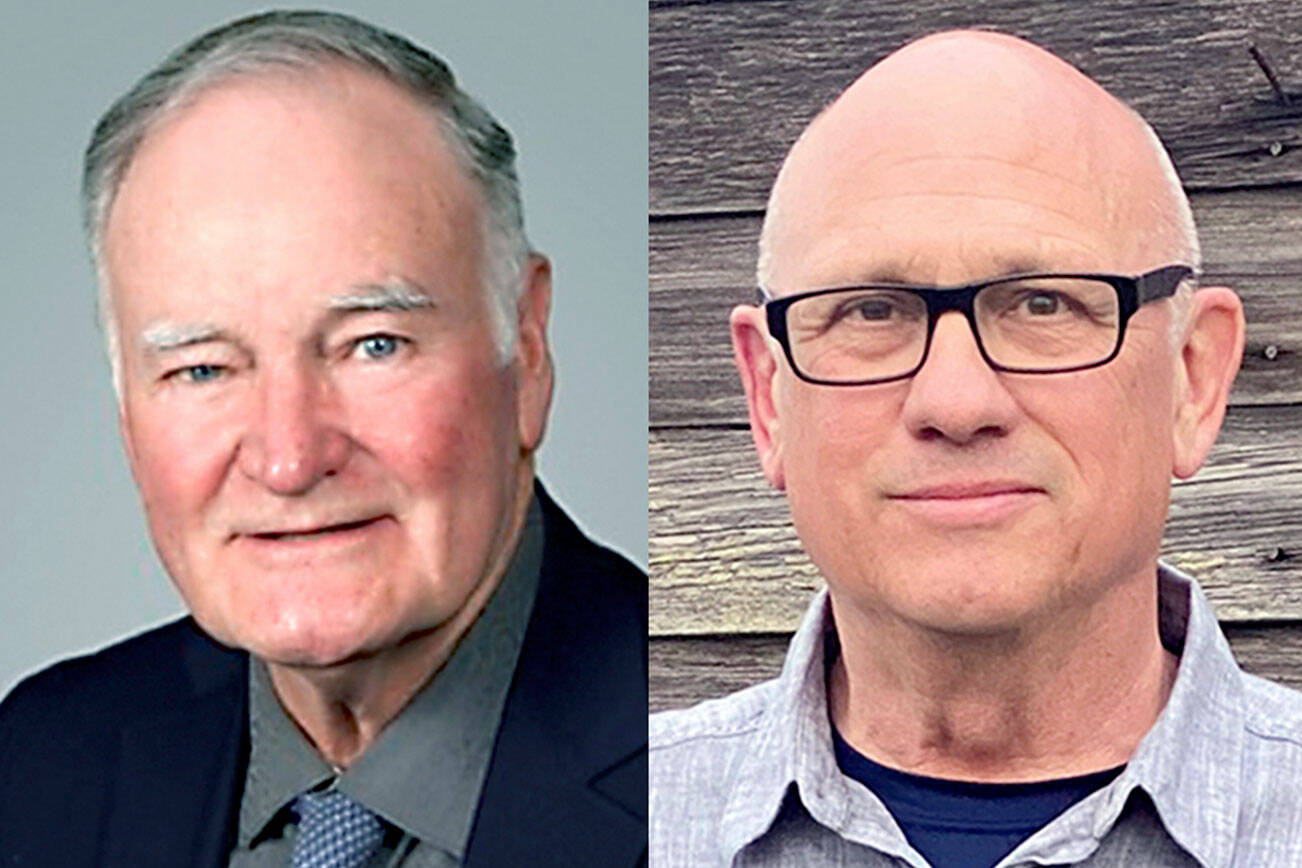The future of Clallam County’s power generation was the subject of debate on Sept. 13 during a forum between candidates for a commissioner seat on the public utility district.
In a tense but cordial exchange, incumbent Will Purser and challenger Ken Hays sparred over the Clallam PUD’s record where Purser has served since 2001.
Hays was deeply critical of Purser’s tenure at the PUD, and said commissioners haven’t been active enough about diversifying the county’s energy generation, remaining too dependent on hydropower.
“My opponent has become institutionalized in his thinking,” Hays said. “It’s time to bring our county into the 21st century.”
Hays — an architect who served on the Sequim City Council beginning in 2008, and as mayor from 2010-2014 — said the PUD is in need of a change of direction.
The PUD hasn’t been proactive enough about pursuing additional energy generation projects that will be needed to meet an ever-growing demand for electricity, Hays said.
“Hydro combined with other resources like advanced nuclear fission, electro-fuels, advanced biofuels, wind, solar, pump storage and other new innovations that are yet to emerge are all going to be required to meet the demand,” Hays said.
Asked about efforts to remove dams on the Lower Snake River, Hays said the PUD should protect the hydro-electric system as part of a larger energy portfolio.
“The Lower Snake River dams, I don’t know what to think, they’ve been mired in controversy since before they were built,” Hays said.
“What I know from BPA’s own website is, it costs $275 million a year to operate and mitigate those four dams, and all of that power is sold surplus, but it only generates $200 million in revenue; you tell me what I should think.”
A 2015 study commissioned by BPA puts the annual cost of the dams at $227 annually, with a yearly increase of 4.5 percent.
Purser said his time on the commission had consistently delivered reliable services at affordable rates and expanded into new technologies such as broadband.
“Since I’ve been on the commission for an extended period, I’ve overseen many changes in the utility,” Purser said.
“We’ve always considered those changes with deliberate forethought,” he said.
“Natural resource and energy issues are very complex, and that’s compounded by concern about climate change and constant mandates coming out of Olympia and Washington to deal with that, so I think experience is very important as far as this office.”
Hays was also critical of the PUD’s relationship with the Bonneville Power Association (BPA), which supplies most of the district’s power supply.
“My opponent is all in on signing whatever contract they put forward that binds all 29 PUDs in this state alone,” Hays said. “One size does not fit all.”
“It’s a contract that constricts and restricts our ability to thrive in this county,” he added.
The BPA is a federal agency overseen by the U.S. Department of Energy that controls a series of hydroelectric dams in the Pacific Northwest and provides most of the power for the state of Washington, as well as communities in California, Idaho, Montana, Nevada, Oregon, Utah and Wyoming.
Clallam PUD doesn’t negotiate directly with BPA, Purser said, but through a group called the Public Power Council, which represents dozens of consumer-owned utilities in Washington state, Idaho, Montana and Oregon.
“There’s no direct negotiation between Clallam PUD and the Department of Energy,” Purser said. “That’s done through these other organizations, and we influence that by participating in the public power community.”
Hays said he wasn’t suggesting cutting ties with BPA, but maintained that the agency was financially unstable and sought to maintain its dominance in the energy market by charging high transmission rates for independent producers.
“BPA struggles to have revenues match expenses, its bottom line, they’ve been in trouble and they’ve openly admitted it for decades,” Hays said.
“I do not believe the tiered-rate methodology is to the customer’s benefit, I think it’s to BPA’s benefit to help lock people into contracts so that they can remain solvent.”
Purser said that because BPA had sold increased energy to California at a higher rate, the agency had additional financial reserves triggering a distribution clause.
Utility customers of BPA will receive a combined $250 million, Purser said, $200 million of which will go to debt reduction, $50 million to fish and wildlife mitigation.
“What that means for Clallam PUD is zero rate increase for the next two years plus a half-a-percent decrease,” Purser said.
Hays welcomed the rebate, but maintained that the PUD was too reliant on hydroelectric power.



